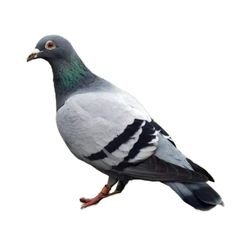Birds

Bird Facts and Identification
Birds are colorful creatures, and the colors can vary depending on the species. Grey, white, black, and brown are some of the most common colors of birds. Pigeons can also be seen with light blue, green, or peach streaks.
It is estimated that house sparrows are about 14 cm to 18 cm long with a wingspan of 19 cm to 25 cm. Other than that, the Canadian geese have wingspans ranging from 90 to 120 cm.
Different types of birds have different physical characteristics. But all of them have feathers, wings, and beaks. They are of varying size, shape, and have different features.
Get A Free Quote
We are affordable Pest Control Service in GTA & Surroundings Areas.
Birds are fascinating creatures that come in various sizes, shapes, and colors. They are known for their unique abilities to fly, sing, and migrate across long distances. They may seem beautiful, but once many of them gather and nest at your place, it will become a nuisance.
Understanding bird facts, characteristics, habitat, and behaviour helps in early detection and prevention against these nuisances. You can use some DIY control methods; however, in case of severe infestation, call Acme for reliable bird control in the GTA and its surroundings.
Characteristics of Birds
Birds are warm-blooded animals, with feathers, wings, and beaks. Most birds can fly, but some species, such as penguins and ostriches, are unable to do so. Birds are lightweight and have hollow bones, which make their flight easier. They lay eggs and can breathe through lungs and air sacs.
Six bird types in Canada can be classified as nuisance pests: house sparrows, starlings, pigeons, woodpeckers, gulls, and Canada geese. All of these birds are common in Canada, but each one can be a nuisance to humans.
Bird Habitat
Have you ever wondered where birds live? Birds inhabit a diverse range of environments, from tropical rainforests to arid deserts and from oceanic islands to polar regions.
Some birds, such as penguins, are adapted to living exclusively in water, while others, like ostriches, thrive in open grasslands. Many species of birds are migratory, traveling thousands of miles each year to breed and feed in different locations.
Birds Life Cycle
Birds have a unique life cycle, including courtship, breeding, and raising offspring.
- Courtship behaviors vary among species but can include elaborate displays of feathers, singing, and dance-like movements.
- Once a mate is chosen, the female bird lays eggs, which are typically incubated by one or both parents.
- The length of incubation varies depending on the species, with some birds hatching within a few days while others take several weeks.
- Once hatched, the chicks are fed by their parents until they can leave the nest and fend for themselves.
What do Birds Eat?
Birds have varied diets, depending on their species and habitat. Some birds, such as raptors, are carnivorous and feed on other animals, including insects, rodents, and other birds.
Others, like hummingbirds, feed on nectar from flowers and consume insects for protein. Many birds, such as ducks and geese, are omnivorous, feeding on both plants and animals.
Residential Birds Control Service
Contact Acme Pest Solutions for Bird Management Services in Toronto. We control and manage the following bird infestations: Starlings, pigeons, house sparrows, and Canadian Geese.
Signs of Bird Infestation
The following are some common signs of bird infestation:
- One of the most apparent indications of a bird infestation is the constant chirping and fluttering sounds from nests or roosting sites.
- Additionally, bird droppings around the exteriors of buildings, ledges, roofs, and sidewalks are a tell-tale sign of an infestation. Bird droppings can also cause serious health issues as they contain harmful bacteria that can be transmitted to humans.
- Another common sign is property damage caused by birds nesting in areas such as chimneys, vents, or gutters. This can lead to clogging and blockage, resulting in water damage and fire hazards.
Moreover, bird feathers stuck to walls or window sills should not be ignored, as they could indicate an ongoing bird problem.
3 Tips to Prevent Bird Infestation
- Clean your property regularly: Bird droppings are a significant food source for pests, so keeping your property clean will help prevent an infestation. Clean up any spilled food or water, and remove any building debris that could provide shelter for pests.
- Remove bird food: Bird food can help to attract pests, so remove any food sources that could lead to an infestation. This includes bird feeders, bird baths, and other areas where birds congregate.
- Close off potential entry points: Ensure that any possible entry points for birds, such as broken windows or doors, are closed off. This will help to keep pests from entering your property.
Pesky Birds in Your Balcony- Call Acme Bird Control Team
If you notice an increase in bird activity, please call ACME Pest Solutions. We can identify the source of the problem and recommend the best course of action to prevent an infestation. Our bird removal Toronto team will ensure swift and humane treatment of the infestation without causing harm to either you or the birds.
Areas We Serve:
ACME Pest Solution offers bird management services in:
Frequently Asked Questions (Faqs)
Bird lifespan depends on the type of bird. For example, small birds may live for 2 to 5 years, while larger birds can live up to 20 to 80 years.
The Ostrich is the largest bird in the world. Ostriches are 9 feet tall and weigh over 150 kgs.
The bee hummingbird is the smallest bird in the world. Its size is only 2 inches, and its weight is 2 grams. This bird belongs to Cuba.
Birds travel long distances in different seasons in search of a better habitat; this is known as migration.
